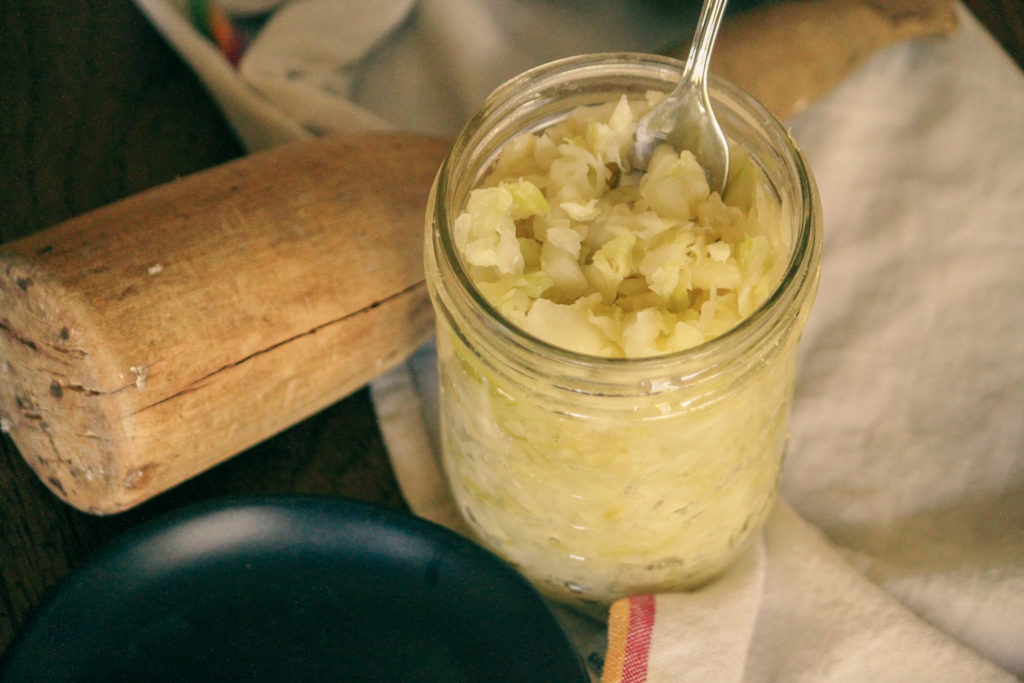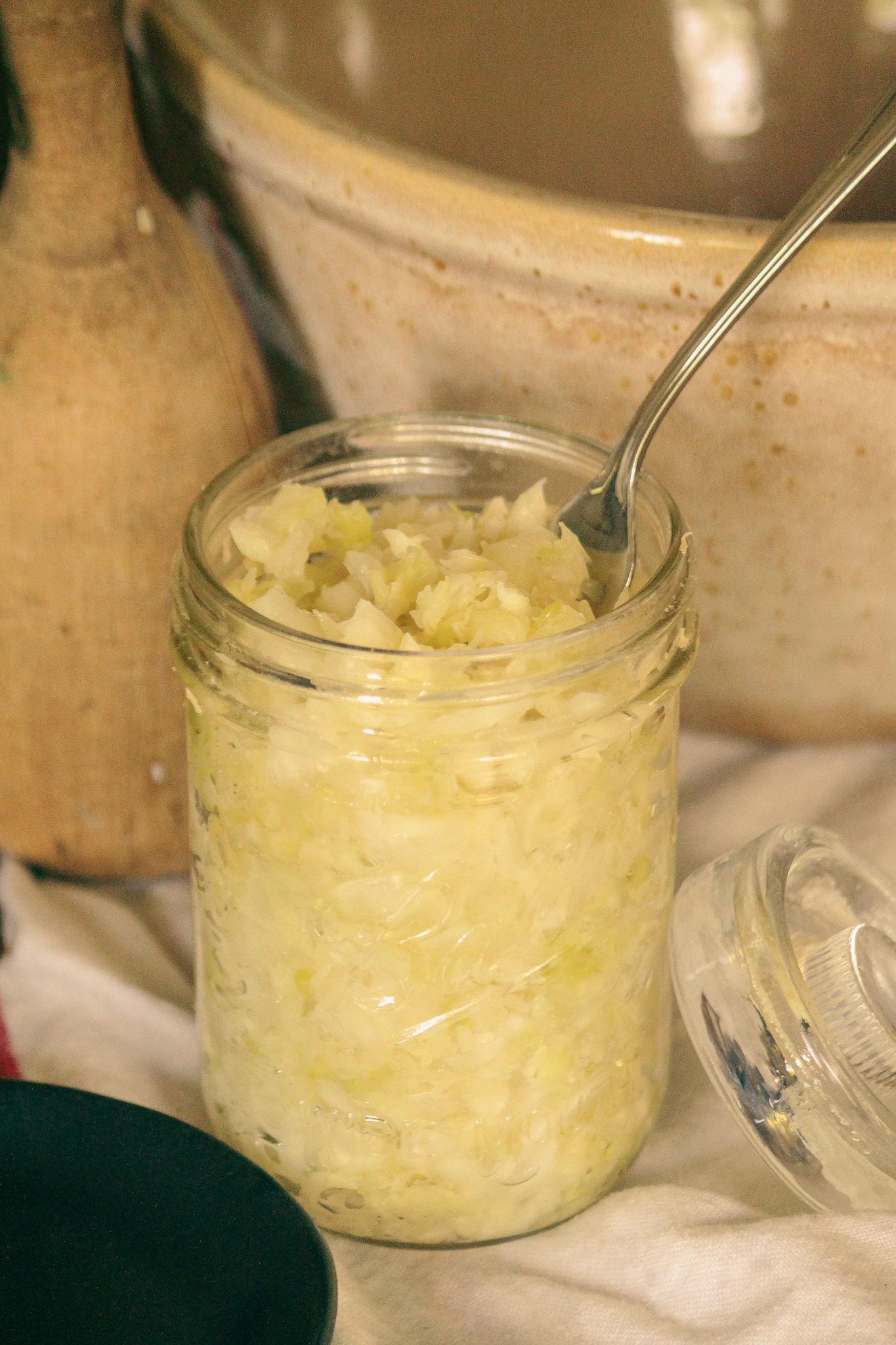
History
St. Henry Melchior Muhlenberg served as faithful shepherd to his churches as well as to the first Lutheran synod on American soil. He was also a faithful journal keeper, so much so that his daily tidbits have been broken up into three volumes and even made accessible to the modern American in English, thanks to the work of Theodore Tappert and John Doberstein. Tappert is a name you might also recognize for his translation of our Lutheran Book of Concord!
In these volumes, Muhlenberg frequently makes mention of the cabbages the women would bring in and the sauerkraut he himself would put up. At times he even made note of how much he paid for cabbage on a particular day. This likely comes as no surprise, given that Muhlenberg had emigrated from Germany, and it makes this tasty and health-boosting side a wonderful food to enjoy on October 7th in honor of Muhlenberg’s stamp on American Lutheranism.


Sauerkraut
Sauerkraut is the product of lacto-fermented cabbage. That is, adding salt to this vegetable allows the proliferation of beneficial bacteria found on the cabbage while staving off harmful bacteria and mold. Lactic acid ferments are a traditional food from all around the world, but we receive the name for this food, sauerkraut, from the German word for “sour cabbage.”
Ingredients
1 medium head of cabbage
1 tablespoon salt (2 tsp per pound of cabbage)
Caraway seed (optional)
Instructions
- Take your cabbage and peel back the outer leaves. Save one clean, large leaf for later.
- Thinly slice the cabbage into strips, cutting around the dense inner core, which can be discarded.
- Place the sliced cabbage in a bowl, add salt, and begin working it with your hands to incorporate the salt. After a minute, begin squeezing the cabbage to extract the water until the cabbage becomes limp.
- Stuff the cabbage into a clean glass jar and top with the remaining water at the bottom of the bowl.
- Take the cabbage leaf that was set aside, cut into a circle a little larger than the circumference of the jar, and place it inside to ensure that all of the cabbage pieces are submerged under the water to prevent molding.
- Let sit undisturbed for 4-5 days and up to two weeks on the countertop until it reaches the desired taste. The shorter the time period, the saltier the sauerkraut will be, and the longer it ferments, the tangier it will be. Ferment to your liking by taking a clean fork to taste test, trying to disturb the ferment as little as possible.
- Once the desired taste is achieved, keep in the refrigerator for up to six months.
St. Henry Muhlenberg Sauerkraut
Ingredients
- 1 medium head of cabbage
- 1 tbsp salt
- caraway seeds optional
Instructions
- Take your cabbage and peel back the outer leaves. Save one clean, large leaf for later.
- Thinly slice the cabbage into strips, cutting around the dense inner core, which can be discarded.
- Place the sliced cabbage in a bowl, add salt, and begin working it with your hands to incorporate the salt. After a minute, begin squeezing the cabbage to extract the water until the cabbage becomes limp.
- Stuff the cabbage into a clean glass jar and top with the remaining water at the bottom of the bowl.
- Take the cabbage leaf that was set aside, cut into a circle a little larger than the circumference of the jar, and place it inside to ensure that all of the cabbage pieces are submerged under the water to prevent molding.
- Let sit undisturbed for 4-5 days and up to two weeks on the countertop until it reaches desired taste. The shorter the time period, the saltier the sauerkraut will be, and the longer it ferments, the tangier it will be. Ferment to your liking by taking a clean fork to taste test, trying to disturb the ferment as little as possible.
- Once the desired taste is achieved, keep in the refrigerator for up to six months.


